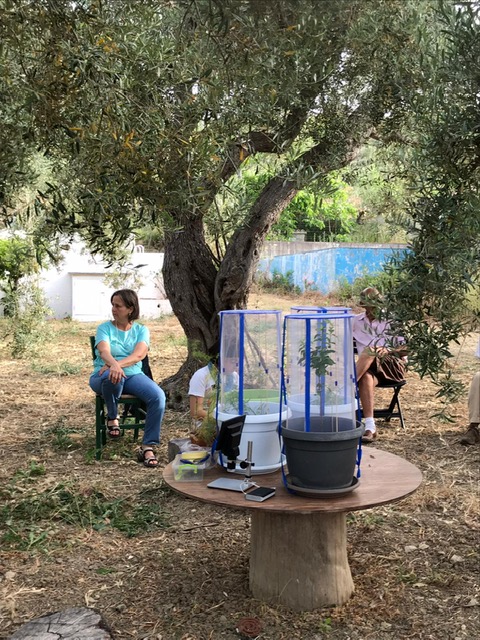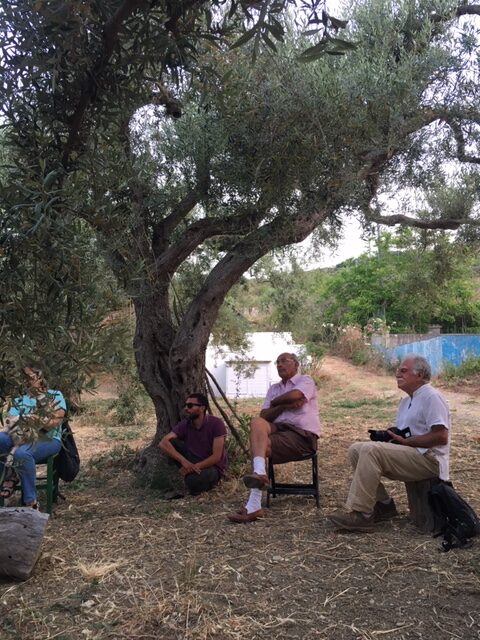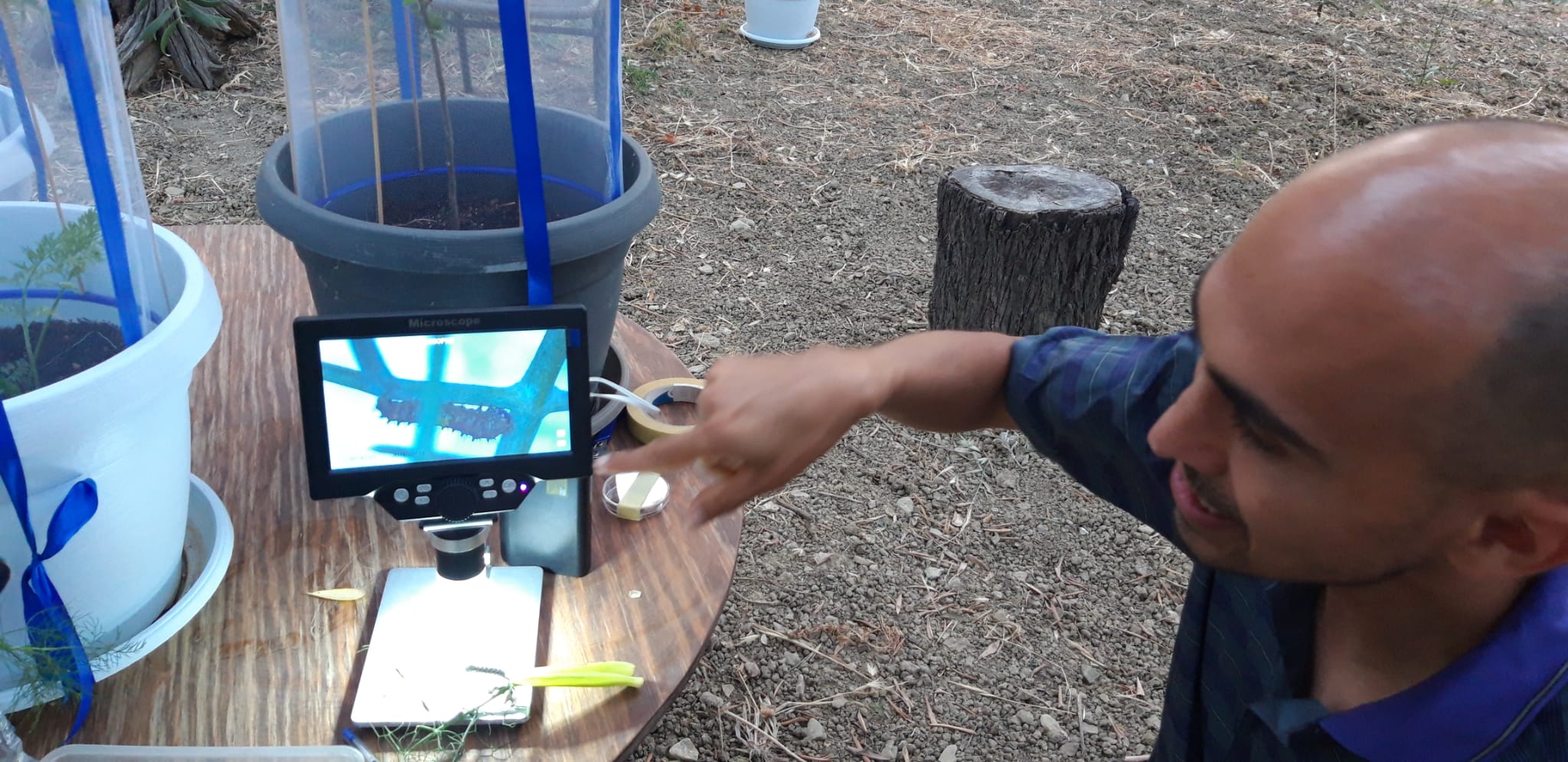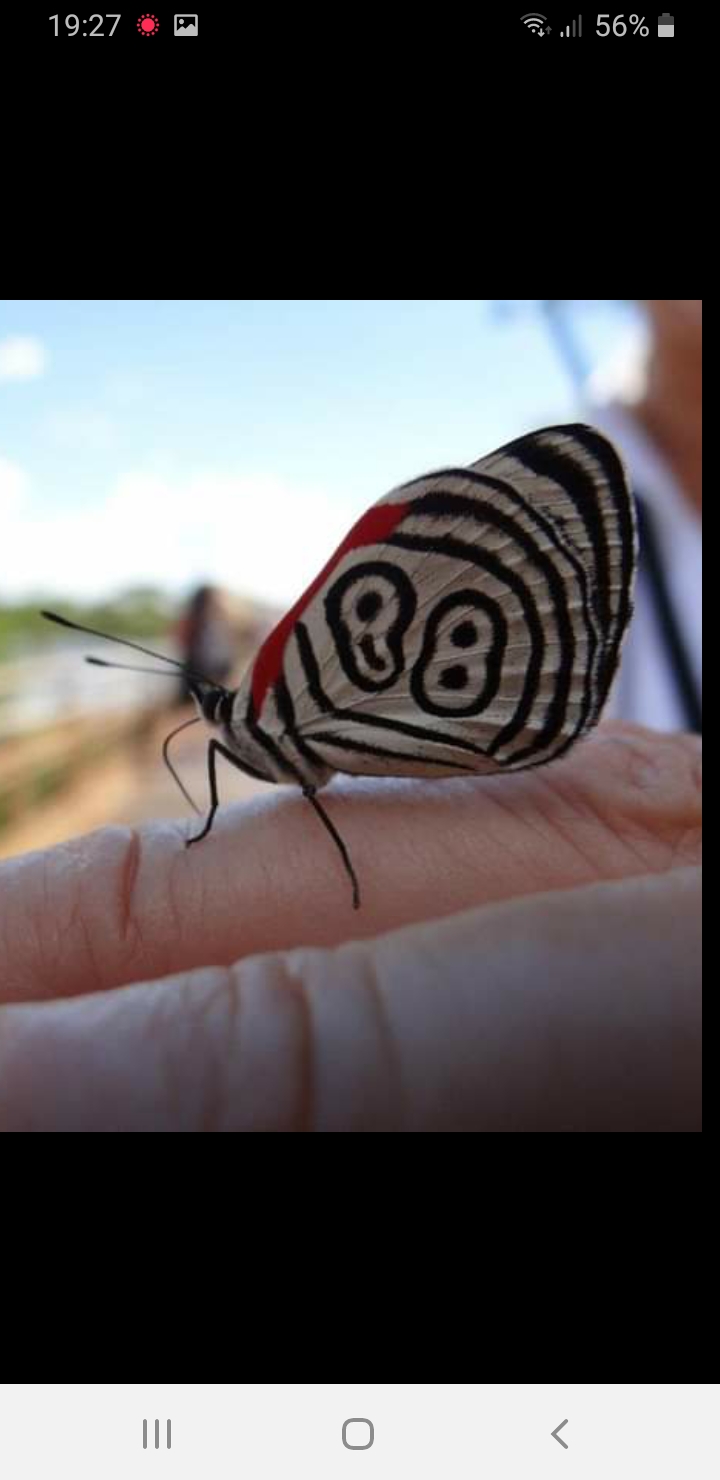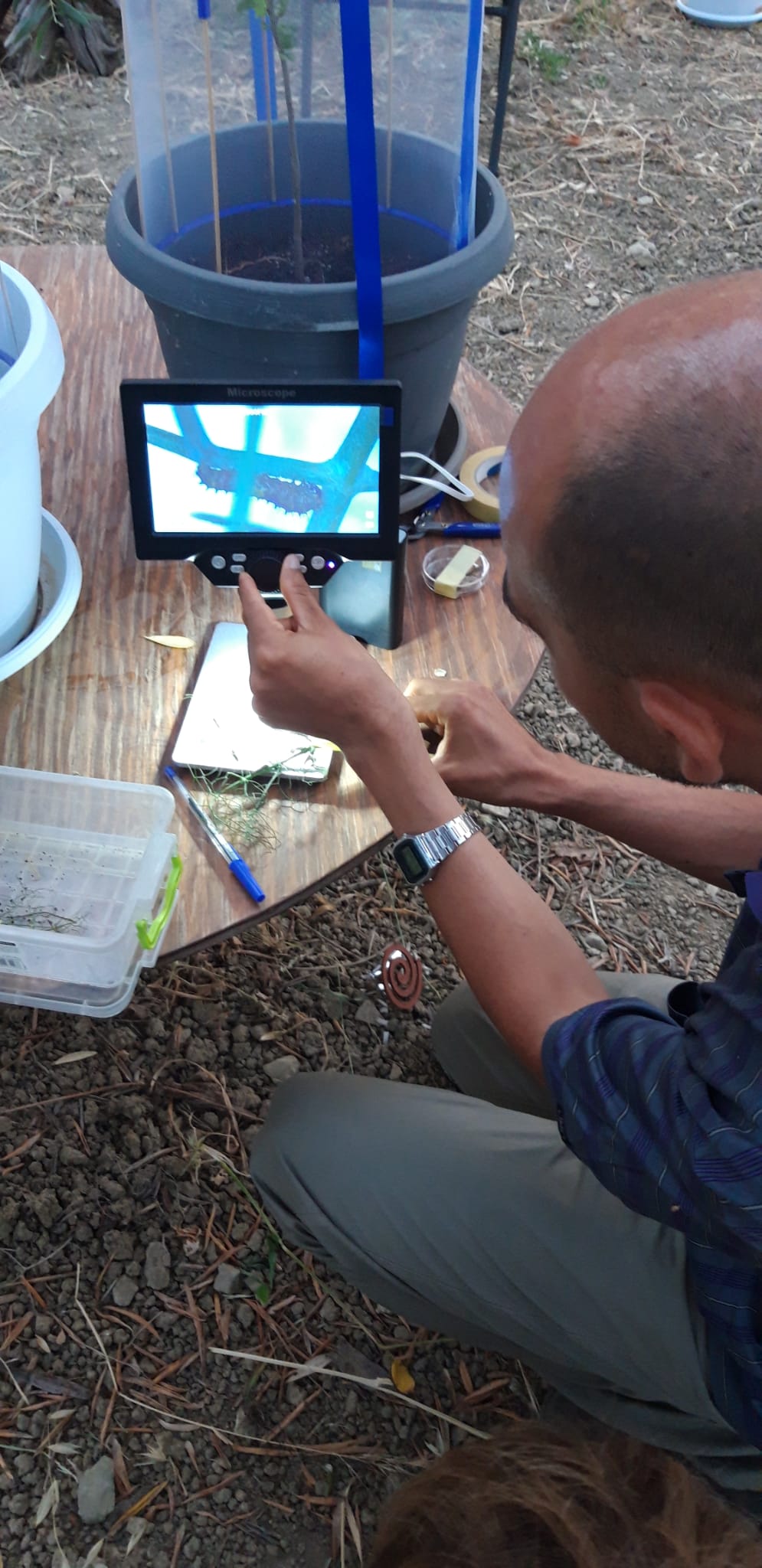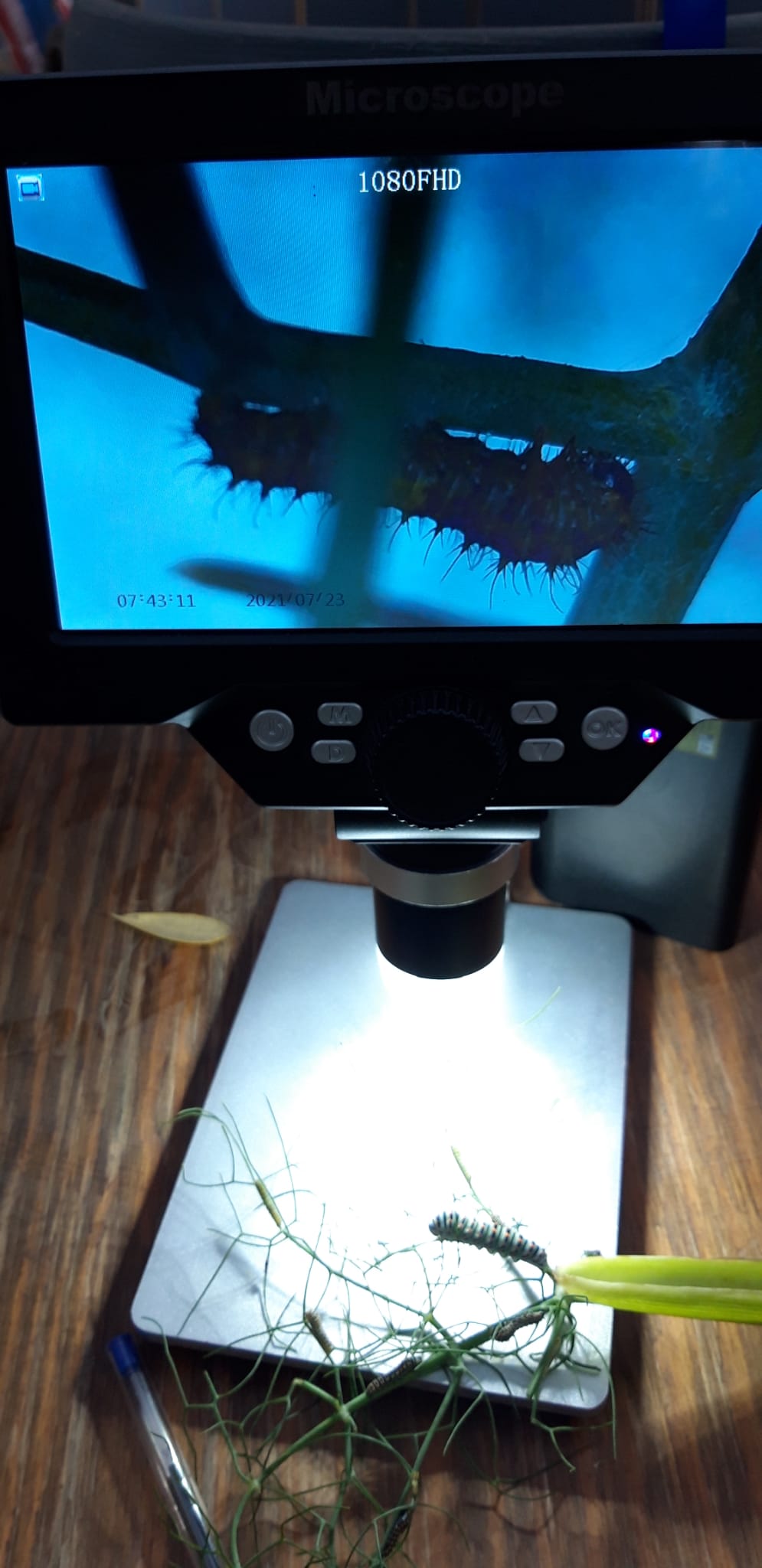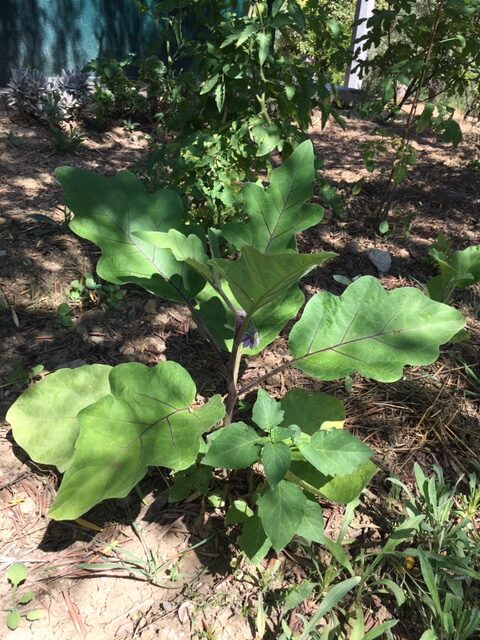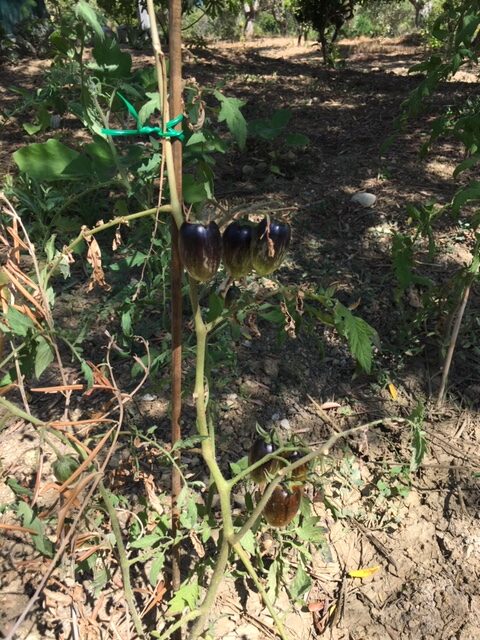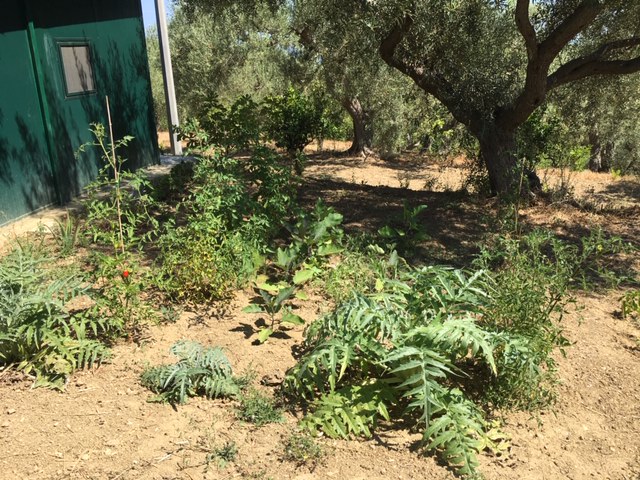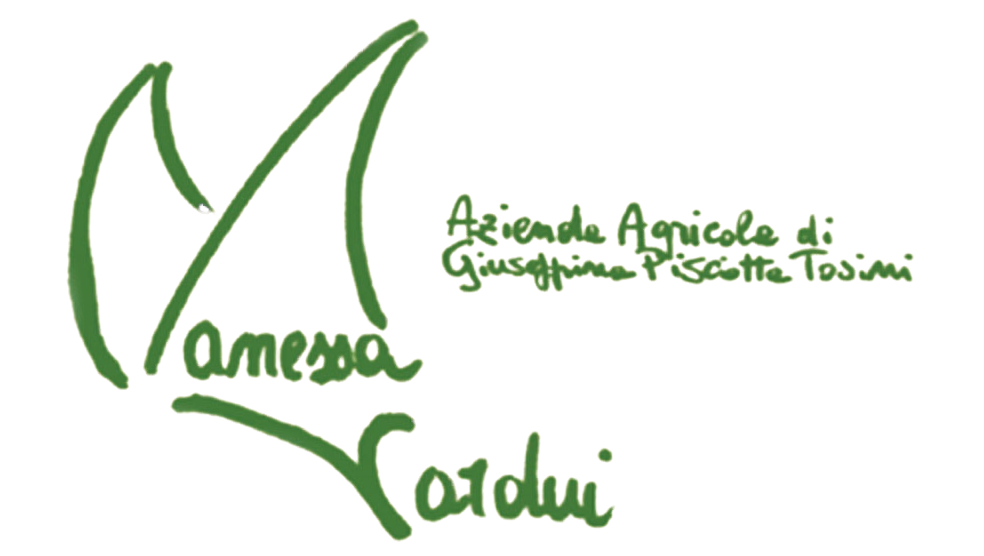June 19, 2021
→ CATERPILLAR-BUTTERFLY METAMORPHOSIS
On Saturday 19 June 2021 at 6:45 pm at Vanessa Cardui farm, under the imposing olive tree, we – with the Aterraterra Collective, the butterfly-lover Salvatore Varco and the actress Patrizia D’Antona – celebrated the miracle of the many metamorphoses that populate earth and sky. In the name of biodiversity, many were the metamorphoses retold: from seed to fruit, from caterpillar to butterfly and, in Greek myth, from divinity to humanity.
The Garden of Biodiversity
Aterraterra Collective
The Garden of Biodiversity is a horticultural project revolving around plants and the relationships that entwine them with other beings both living and inanimate. We see our form of agriculture as the dissemination of tiny ecosystems in which humanity, suspicious of its own anthropocentrism, attempts to engage with natural biodiversity in the least hierarchal way possible. This implies attentive observation of plants’ behaviour and respect for the plants themselves, as much as for other forms of life and organic matter in the surrounding space, which become part of a truly sustainable and ever-less human-centred agricultural practice.
During our residence at the Vanessa Cardui Farm, we created a little space in concert with the other forms of life inhabiting the same terrain: a micro-ecosystem of symbioses and relations. To support that biodiversity, we introduced time-honoured crops – crops now at risk of extinction on account of the ever-more diffuse cultivation of commercial varieties – into the set of ecosystemic relations that preceded us. We will continue to nurture this little garden-ecosystem by way of becoming: a garden as a developing network of relationships. In turn, this initial phase is to be the first step toward the reproduction of ancient seeds, which will be duly distributed throughout the territory. During the residency we also began to compose the first draft of a sort of future manifesto of the ecological and relational philosophy of ‘Aterraterra’.
During our residence at the Vanessa Cardui Farm, we created a little space in concert with the other forms of life inhabiting the same terrain: a micro-ecosystem of symbioses and relations. To support that biodiversity, we introduced time-honoured crops – crops now at risk of extinction on account of the ever-more diffuse cultivation of commercial varieties – into the set of ecosystemic relations that preceded us. We will continue to nurture this little garden-ecosystem by way of becoming: a garden as a developing network of relationships. In turn, this initial phase is to be the first step toward the reproduction of ancient seeds, which will be duly distributed throughout the territory. During the residency we also began to compose the first draft of a sort of future manifesto of the ecological and relational philosophy of ‘Aterraterra’.
The Metamorphoses of the Papilio Machaon
Salvatore Varco
The common yellow swallowtail – the papilio machaon – present throughout Europe, appears throughout the Mediterranean from February to October, for as long as ambient temperatures remain clement – above 20°C, at any rate. Adults flit from flower to flower in search of the energising nectar that that their splendid flight requires, and thereby serve the vital function of pollination. The female deposits her eggs directly onto the leaves of their chosen plants so that their newborn are immediately furnished with their preferred diet: dill, anise, wild and domesticated carrot, wild and domesticated fennel, giant fennel and so forth; all of them members of the apiaceae family.
The eggs, small as a grain of sand, yellow at first, darken eventually to black. In the space of 5 to 7 days, a tiny caterpillar emerges, it too black, as small as the point of a pencil. Since caterpillars are bereft of an internal skeleton, the infant swallowtails pass through a series of moults throughout their growth, during which they change colour, appearance and size: from being less than a millimetre in length and completely black, they pass through black-and-white phases, then white-orange-black, before transforming into yellow-green-orange caterpillars prior to the final moult, at more than five centimetres in length and boasting an intense green coloration with orange highlights.
The caterpillar’s growth lasts four weeks, until it ceases to feed and proceeds in search of a quiet place to transform once again, into a chrysalis. This might be yellow or green, the better to camouflage itself against the surrounding environment. In a dormant state, it awaits its final metamorphosis: the butterfly (or the imago). This is its most delicate phase, since the chrysalis – wingless, legless, unable to flee or even to move, suspended by the finest silken filament – has no choice but to remain stationary and at the mercy of predators, parasites, storms, floods, winds, fires and other misfortunes for a period of time that can vary between ten or so days (in spring or autumn) to many weeks or even months (summer or winter) before it can finally become a butterfly.
Without a doubt, this is also one of the most enigmatic and magical phases in the animal kingdom, since no one knows what takes place inside that chrysalis. It is a mystery that has fascinated humanity for millennia: the chrysalis’ long final wait reveals to us, in all its splendour, the very essence of nature’s delicate beauty, enshrined in the magnificent flight of a butterfly.
The eggs, small as a grain of sand, yellow at first, darken eventually to black. In the space of 5 to 7 days, a tiny caterpillar emerges, it too black, as small as the point of a pencil. Since caterpillars are bereft of an internal skeleton, the infant swallowtails pass through a series of moults throughout their growth, during which they change colour, appearance and size: from being less than a millimetre in length and completely black, they pass through black-and-white phases, then white-orange-black, before transforming into yellow-green-orange caterpillars prior to the final moult, at more than five centimetres in length and boasting an intense green coloration with orange highlights.
The caterpillar’s growth lasts four weeks, until it ceases to feed and proceeds in search of a quiet place to transform once again, into a chrysalis. This might be yellow or green, the better to camouflage itself against the surrounding environment. In a dormant state, it awaits its final metamorphosis: the butterfly (or the imago). This is its most delicate phase, since the chrysalis – wingless, legless, unable to flee or even to move, suspended by the finest silken filament – has no choice but to remain stationary and at the mercy of predators, parasites, storms, floods, winds, fires and other misfortunes for a period of time that can vary between ten or so days (in spring or autumn) to many weeks or even months (summer or winter) before it can finally become a butterfly.
Without a doubt, this is also one of the most enigmatic and magical phases in the animal kingdom, since no one knows what takes place inside that chrysalis. It is a mystery that has fascinated humanity for millennia: the chrysalis’ long final wait reveals to us, in all its splendour, the very essence of nature’s delicate beauty, enshrined in the magnificent flight of a butterfly.
Cultivating Memory
Patrizia d’Antona
A caterpillar’s metamorphosis, however marvellous, constitutes a crude analogy to the human capacity to elevate itself to a higher nature. But modern humanity, accustomed to the demands of its ever-escalating material needs, has lost its super-biological instinct; it has no further interest in this pursuit of elevation, because the memory of its divine natural origins has wasted away! But evolutionary processes are inevitable in human beings: it is only a matter of time! Even the most philistine and brutal amongst us will sooner or later find their humanity. In the end, we will constitute a community of living beings whose common purpose on this earth is reserved to the ‘cultivation’ of love.
Aterraterra + Salvatore Varco + Patrizia d’Antona
for Azienda Agricola Vanessa Cardui,
Comune di Collesano (PA)
June 19, 2021
